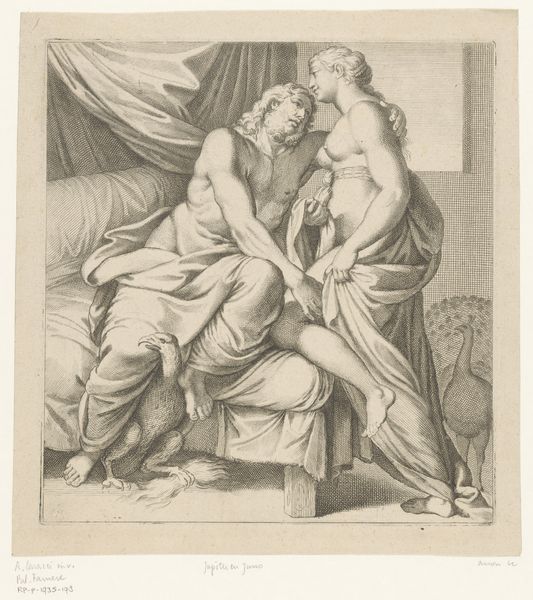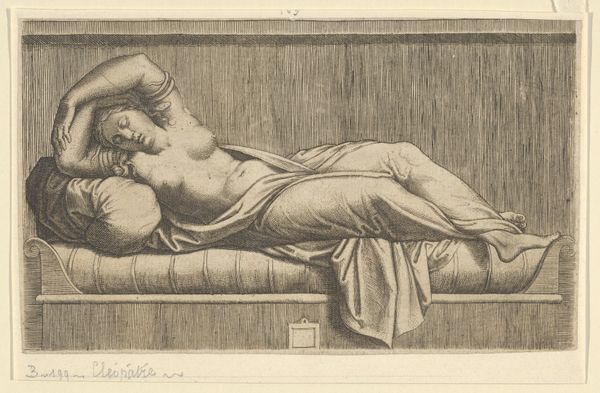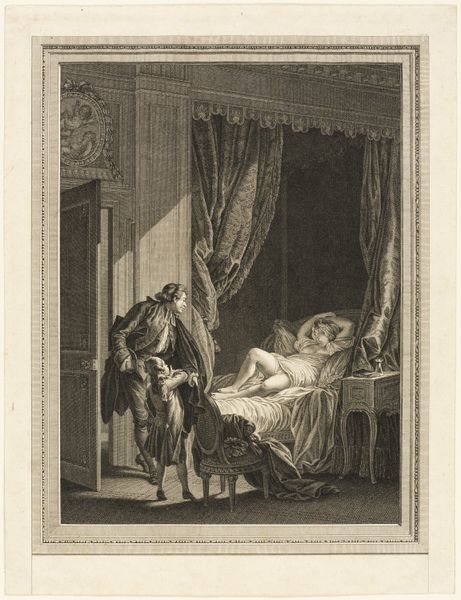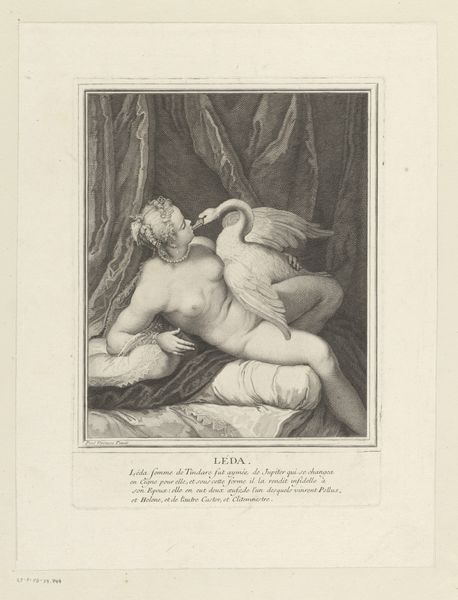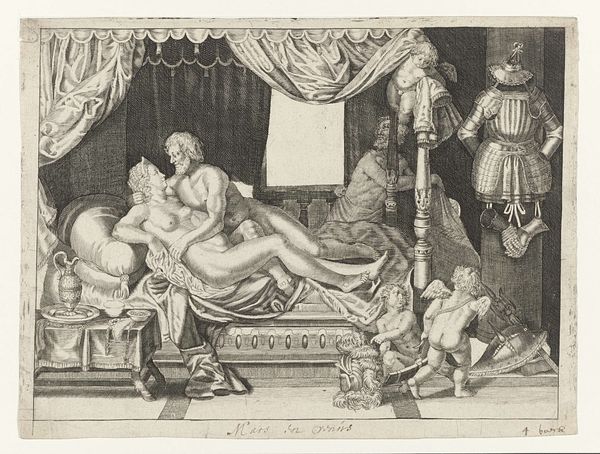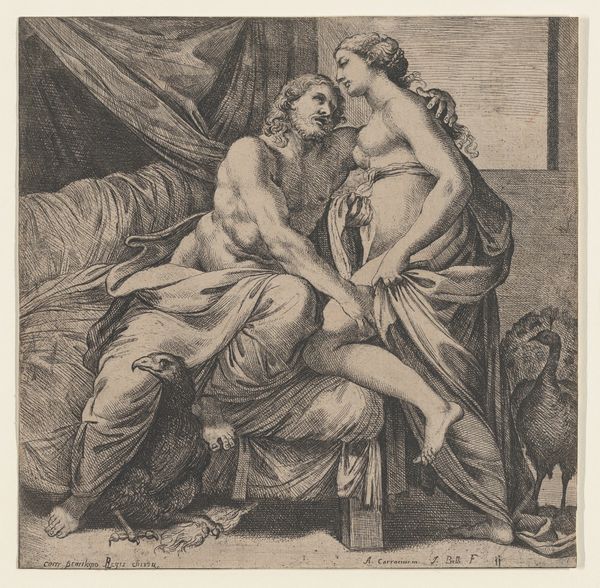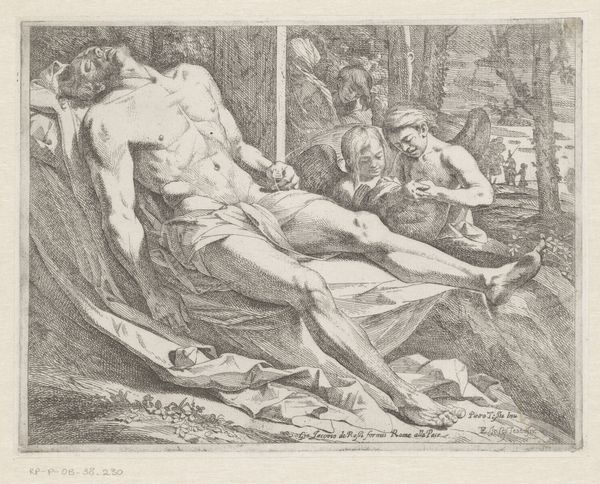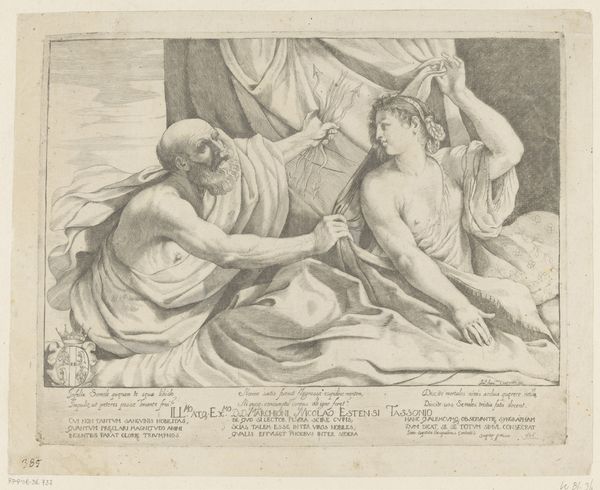
drawing, charcoal
#
drawing
#
charcoal drawing
#
figuration
#
classicism
#
genre-painting
#
charcoal
#
history-painting
#
academic-art
#
nude
Dimensions: height 321 mm, width 405 mm
Copyright: Rijks Museum: Open Domain
Editor: Here we have "Female Nude in a Classicist Interior," a charcoal drawing by Christiaan Kramm, created sometime between 1807 and 1875. The composition feels very deliberate and staged. How do you interpret this work? Curator: Considering its materiality, charcoal allowed Kramm a cost-effective method for sketching ideas related to high-status commissions, a practice essential to navigating the art market. What looks classical to you about this scene? Is it the backdrop or the reclining figure? Editor: Well, I guess it’s a mix of both. The architecture seems to invoke Greek or Roman styles, and then the pose and the subject matter are classical tropes. Curator: Indeed. So, how does Kramm utilize readily available and relatively inexpensive materials, like charcoal, to allude to opulence and power? It’s a fascinating question of accessibility versus aspiration, wouldn’t you agree? He seems to negotiate art for an emerging class while still nodding to the grand manner. Editor: So it's like a reproduction but still valuable in its own right. But if it is neither exactly "high art" nor "craft", can we place it into art history at all? Curator: Absolutely! By questioning these classifications, we can think about how societal hierarchies get represented and reinforced. What can what he’s chosen to represent, and how, reveal about Kramm’s social context and artistic ambition? Editor: I never considered it from this viewpoint before; the artistic practice as social commentary is fascinating. Thank you. Curator: Exactly. Viewing the piece through the lens of labor and materiality has helped unveil layers of meaning, I think.
Comments
No comments
Be the first to comment and join the conversation on the ultimate creative platform.

